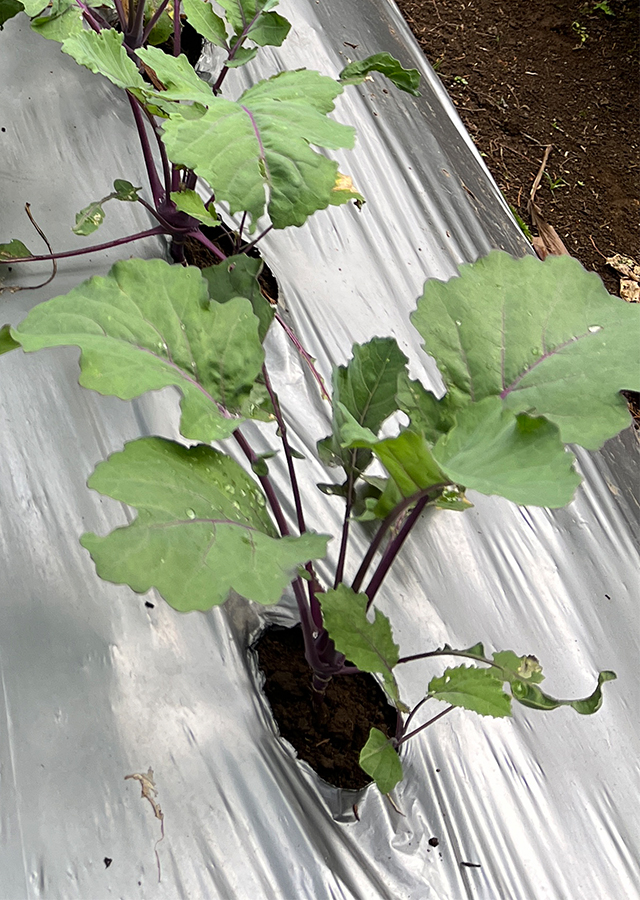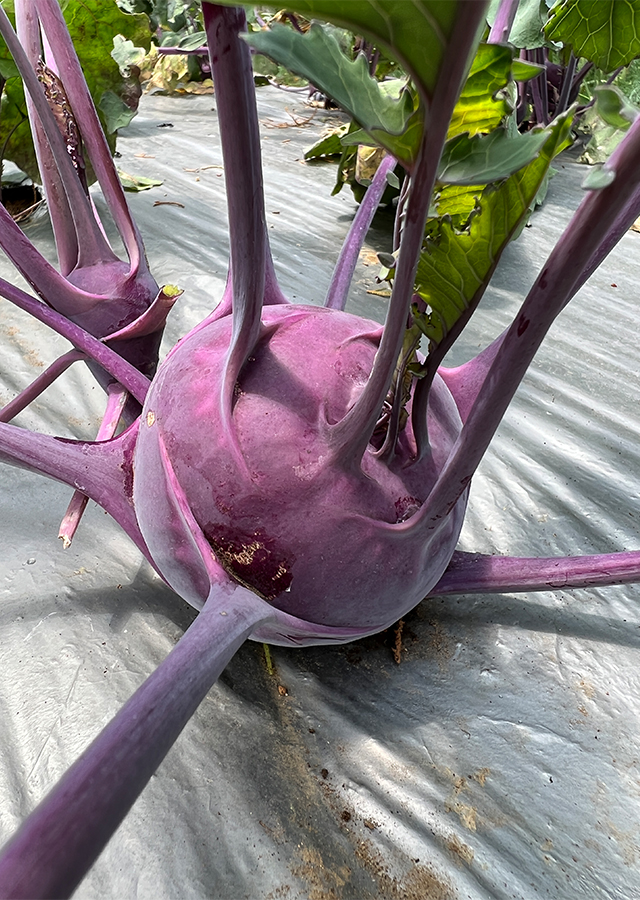Traditional Herbs from Brassica oleracea var. gongylodes
healthy_digestive_system
- Prepare enough kohlrabi leaves\u00a0wash them thoroughly.
- Steam until completely cooked.
- Remove and consume as a side dish.
What is Brassica oleracea var. gongylodes Looks like??



Parts of Brassica oleracea var. gongylodes that could be used
- Leaves
- Tubers
Brassica oleracea var. gongylodes Distribution
Kohlrabi originates from Northwestern Europe. The first records date from the 16th century. Apart from Europe, North America and temperate regions of Asia, kohlrabi also grows in subtropical Asia, e.g. in India, China, and northern Vietnam. Kolrabi stem tubers are usually chopped and cooked, but are also used in soups or eaten raw in salads. Industrially it is made into frozen products. The taste and texture of kohlrabi is similar to broccoli stems or cabbage hearts, but is milder and sweeter, with a higher ratio of flesh to skin. Kolrabi has health benefits and according to research has antidiabetic, anti-inflammatory, antioxidant, anticancer and antibacterial activity.Agroecology of Brassica oleracea var. gongylodes
Easy to grow in organic-rich, consistently moist, well-drained loamy soil in full sun. Soil pH ranges between 6 and 7. Kohlrabi usually grows in cool temperatures. It requires cool temperatures to produce the best harvest. Plants generally grow poorly when daytime temperatures consistently exceed 26 �C.
Morphology of Brassica oleracea var. gongylodes
- Taproot and lateral roots, highly branched.
- Unbranched, swollen, tuber-like stem up to 12 cm in diameter, pale green to purplish.
- Leaves alternate, simple or with several small side lobes at the base; stipulation no present; all leaves with distinct, slender petioles; blades ovate in outline, irregular iris, blue-green.
- Flowers\u00a0bisexual, regular, 4-merous; ascending; sepals oblong, c. 1 cm long, erect; petals ovate, 1.5\u20132 cm long, pale to bright yellow or whitish stamens 6; is a terminal paniculate race.
- Linear silique fruit 5-10 cm \u00d7 c 5 mm, with a long tapering beak 5\u201315 mm, broken, up to 30 seeds.
- Seeds round, 1.5\u20132 mm in diameter, finely reticulate, brown. Seedlings with epigeal germination, hypocotyl 3-5 cm long, no epicotyl with petiole 1-2 cm long, blade heart-shaped, 1-1.5 cm long, pointed at the base, notched at the apex.
Cultivation of Brassica oleracea var. gongylodes
Propagation of kohlrabi plants is obtained from seeds. Seeds are sown in seedbeds or modules. The weight of 1000 seeds is 3-5 g. Young seedlings may need to be shaded to prevent hot sun. Seed requirements are 300�700 g/ha. Transplantation to the field should be carried out when the seedlings have 7-9 true leaves, 30-40 days after planting. Plant density 100,000�120,000 plants/ha. In mechanized cultivation, kohlrabi can be sown directly at a rate of 1-2 kg/ha and then thinned to a density of up to 300,000 plants per ha.
Brassica oleracea var. gongylodes, more details :
Chemical Content of Brassica oleracea var. gongylodes8 glucosinolates, 12 anthocyanins, 2 carotenoids, and 7 phenylpropanoids, chlorogenic acid, catechol, epigallocatechin and epicatechin3-O-gallate, isorhamnetic-3-O-glucoside, gallic acid, sucrose, the main fatty acids are linoleic acid, palmitic and oleic, essential oil: 4-methylthiobutyl isothiocyanate, 3-butenyl isothiocyanate, allylisothiocyanate, 5-methylthiiopentanitrile, 3-mediylthiopropylisothiocyanate and 2-phenylethyl isothiocyanate, alkaloid, flavonoid, resin, saponin and tannin compounds.
Benefits of Brassica oleracea var. gongylodes
Healthy the digestive system and has antidiabetic activity, anti-inflammatory, antioxidant, anticancer and antibacterial properties.
Simplisia of Brassica oleracea var. gongylodes
Another Facts for Brassica oleracea var. gongylodes :
Synonym of Brassica oleracea var. gongylodes#NAME?
Habitus of Brassica oleracea var. gongylodes
Herb. Biennial herb reaches 50 cm in height
Habitat of Brassica oleracea var. gongylodes
- Mountains
No comments:
Post a Comment